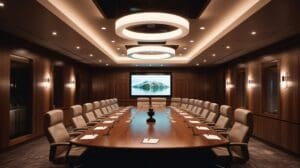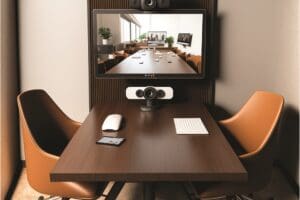Seemingly every day, there’s a new article about how employers are mandating that more employees return to office (RTO). Yet, there seems to be just as many published about how employees are resisting or just flat out refusing to heed those mandates. Now, the battle between employers and employees has made it to the firing stage.
Why do employers want their employees back in the office so badly? Why do employees not want to go back just as strongly? Is the problem the office environment itself? And what can be done to fix it?
The Return-to-Office Movement
Office space utilization is at 30% globally (and only 20% in the U.S.) in the second quarter of 2023, according to XYSense, which is half to one third of pre-pandemic levels. While over 70% of companies have mandated some type of return-to-office, just as many employees believe that their company is requiring them to work from the office because of traditional work expectations.
While the vast majority of managers feel that their team is more productive when working remotely or hybrid, most people believe their co-workers are unproductive when working from home. And although 77% of remote workers report higher productivity, even more business leaders are not confident that their employees are productive when they’re not in the office. This forms the crux of the matter. If a tree falls in the forest, and no one is there to hear it, does it make a sound?
Most businesses have employed a three-day, in-office mandate. This has led to offices being 84% busier mid-week compared to Mondays and Fridays; with Tuesday being the most popular day to come to the office. All this has give rise to a new term, “coffee badge.” More than half of hybrid workers have said they show face in the office and then leave.
This leaves us at the current state of the office environment where most people are not back in the office full time, and they may never return to five days a week. Employees feel like they’re not productive in the office, so do businesses even need an office?
Do I Need An Office?
With more and more statistics and surveys reporting that employees feel more productive when working remotely, the inclination may for companies to have a very limited office space or even none at all. However, there are great reasons for a business to have an office, and 94% of workers say they could be convinced to come back to the office.
The number one reason is collaboration. Indeed.com defines workplace collaboration as, “the process by which employees within a business work together to solve a problem or achieve a goal.” A survey from Zippia found that over half of workers rely on collaboration, with approximately 75% of employees highly valuing teamwork and collaborative efforts. Organizations that actively foster workplace collaboration have been associated with a 50% reduction in employee-turnover rates.
Furthermore, a significant majority of individuals in leadership roles attribute a lack of collaboration as the primary cause of workplace failures. In total, employees say they are more satisfied with their job when they collaborate at work.
Need for Collaboration
One of the other primary incentives for working in a physical office is the opportunity to engage with colleagues. According to research by Microsoft, 84% of employees find motivation from socializing with co-workers, and would be motivated to return to the office to reestablish strong team connections. Additionally, survey respondents expressed their willingness to return to the office more regularly, with most stating they would do so if their direct team members were present, and if their work friends were also in attendance.
Additional reasons for being in a physical office environment include the ability for managers to provide more feedback and advancement opportunities. A majority of managers believe that their hybrid/remote working employees are missing out on impromptu or in-formal feedback. And 90% of CEOs say they’ll give raises and promotions to those that are in the office, reinforcing the idea that business leaders want to be able to see people being productive.
At the end of the day, workers really want flexibility to collaborate in person when needed; yet, they also want to have uninterrupted time when they need to be productive on their own. So, if workers are willing ,and possibly, even wanting to come into the office, why are they not returning? Could the office itself be the problem?
The Problems With The Office
Did you know that the cubicle was created in 1967 because studies showed that a completely open office with no privacy actually reduced communication between employees? Open-plan offices have actually been called the “dumbest management fad of all time,” and yet, they still persist. Is it because they’re the most cost effective use of corporate real estate, or is it that making workers more visible to each other should, on its face, generate more collaboration? Yet, the opposite has been proven true. So, why would someone want to leave, where in many cases, may amount to a private office in their home, to try and work at a place that is full of distractions?
The biggest complaint of those who have returned to the office is that it can be difficult to find quiet places to work in the office. With there being even more calls taking place at desks, 61% of people claim loud colleagues as their biggest distraction. Research done by Sabine Kastner, professor at Princeton who studies visual perception, attention and awareness, shows that for many, an open office can make it nearly impossible to concentrate as our brains are drawn to visual movement.
So, while you will see lots of headphones in the current open office, there’s no way for workers to easily block out visual distractions in the environment.
Challenges of the Office Environment
Since the main purpose of return-to-office mandates is to promote increased collaboration and the sharing of information, teams frequently schedule meetings for in-office days. This leads to a greater demand for meeting rooms and areas dedicated to collaboration. In addition, 80% of employees encounter wasted time because of technical challenges during online meetings.
With less than 10% of conference rooms globally even being equipped for web conferencing, and 88% of meetings having at least one remote participant, it’s a wonder we even still call most of them “conference” rooms! According to one respondent to a survey by XY Sense, “I won’t force my team to come in if there is no place for us to get our work done.” Another respondent said, “even though our rate of occupancy is lower than before the pandemic, our meeting room demand is now higher than ever. The biggest complaint I get is that the mandate is supposed to encourage more collaboration, but on some days there is nowhere to collaborate!”
So, is the office itself the main problem with convincing employees to return to the office? Why would an office worker choose to work in a place full of distractions that isn’t actually conducive to getting his or her work done and doesn’t have the actual space or tools needed to collaborate with colleagues?
Additionally, can AV consultants and integrators help create an office environment that solves these problems while increasing productivity and efficiency?
The Modern Office
The major pain points in the current office are that workers don’t have a quiet place to work; don’t have enough places to collaborate; and therefore, aren’t willing to go to an office to become less efficient at their jobs. Business leaders want to be able to see their employees being productive and want to foster more collaboration. So, it’s time to rethink the office and create an environment that meets the needs of modern workers and businesses.
The office experience and environment need to be aligned to the purpose of work. People need to have a quiet place to be able to work uninterrupted. They also need to have space for collaboration. These are two different tasks and need separate spaces, so trying to combine them does not work. Open collaboration spaces have been shown to be the least used areas of an office; and enclosed meeting rooms are now the most popular space type.
In fact, three-person meeting rooms are 92% utilized, over 40% more than any other sized conference room, owing partly to the fact that small groups work together more frequently. However, these rooms are also often occupied by a single person simply trying to find a quieter place to work in the office.
Reinventing the Office
With office real-estate availability still being high, the time is ripe for companies to ditch the open-office plan and add more small enclosed offices and small conference rooms. If the main reason for employees to even come to the office is to collaborate, the office needs to have more conference rooms than ever. Yet, this doesn’t necessarily mean that the square footage dedicated to conference spaces needs to be dramatically increased. It just means that additional smaller conference rooms are needed as the average meeting has only three to four attendees.
Enforcing Web Conferencing
It is also now imperative that every meeting room have web-conferencing capabilities as 88% of meetings have at least one remote participant. The amount of possible technology solutions for the conference room can be overwhelming. By far, the largest web-conferencing platforms are Microsoft Teams and Zoom and both have dedicated room solutions for their platforms, but even narrowing to a single platform leaves an abundance of options.
64% of employees feel that their company uses too many communication platforms. Additionally, 83% of employees say good technology is important to them when working. Making sure that conference rooms are not only easy to use but also that the user experience is the same across different sizes of rooms is extremely important. In fact, according to research by Zippia. unproductive meetings in the U.S. alone cause a total loss of $37 billion dollars every year.
Creating the same experience can be challenging for larger rooms as remote participants can feel disconnected from the larger meeting happening in person. Frost & Sullivan refers to the new solution type for these rooms as “high-impact spaces.” However, the key goal to keep in mind is that any single participant who is talking should be shown at the same size as everyone else, regardless of whether they are remote or in person. Microsoft has thus developed their Front Row experience while Zoom has Intelligent Director which can help provide participant equity. Nevertheless, the rooms still need to be specifically designed for these experiences.
Need for Information Management
If the workforce is not going to be in the office five days a week and different departments may have different schedules for office days, room and office scheduling panels are must-haves for any current office. There are many different options available for desks and conference rooms, but, make sure to choose ones with clear indicators, so others can tell if a room is reserved or available without having to interrupt a meeting as 62% of meetings are unscheduled.
For those not in the office on a regular basis, they may need help finding where to go. Digital signage can help fill that need. Whether in a lobby or throughout the office, digital signage can have many different uses to be able to fulfill multiple needs at the same time. Determining what is trying to be achieved or communicated is the key goal. Is it to help with navigation, wow people, educate, entertain, advertise or some combination thereof?
Seamless Experiences & Enhanced Security
It is also important to not only to think about the office experience for employees, but also for visitors. What will their first impression be? How will they navigate the office and how will the business maintain the security of the space at the same time? Combining access control, video security, and visitor management into one cohesive platform can dramatically increase the seamlessness of the experience for all while simultaneously increasing security.
A modern access control system that no longer requires key cards and a modern video security system with analytics can provide valuable insight into the whereabouts of employees. They also ensure greater security by providing real-time alerts when someone is not where they are supposed to be.
Moreover, combining specific security data with information from an occupancy-tracking system can help businesses make the best use of their office real estate. Being able to understand how an office is used with actual data is the best way to make strategic decisions about what and how many rooms types are needed, as well as when an office is falling short of the employees’ needs.
Final Thoughts
In summation, the purpose of the office is to collaborate. Making sure the office environment has all of the right technology to foster that collaboration while navigating all of the different choices can be a difficult and time-consuming process. With this in mind, technology consultants and integrators need to play an even bigger role in shaping the modern office environment.
Michael Lane, CTS-D, is founder of Reckoner Consulting, a workplace technology consultancy.















